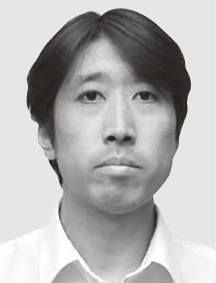How to pass on the expertise of experienced workers is one of the challenges facing the manufacturing industry. At many plants, data is spread across different legacy systems and it is up to people to collate this information for use in decision-making. To address this issue, Hitachi utilizes a technique it has developed called SIMT for the integrated management of data scattered across various existing systems to enable the digital capture and representation (digitalization) of operational know-how held by individuals. It has also developed a centralized information management platform, WIGARES, that automatically provides users with the information they need to perform their work, when they need it. One of Hitachi’s Lumada solutions, WIGARES enables the digitalization, sharing, and integrated management of operational know-how. Along with marketing it to a wide range of manufacturing industries, Hitachi is also contributing to building a sustainable society by working to enhance business value and build resilience (business continuity) in manufacturing by integrating WIGARES and other digital solutions with the aim of automating plant operations through the implementation of cyber-physical systems.




Manufacturing needs to achieve sustainable practices by 2050, as exemplified by carbon neutrality and the circular economy. This has heightened efforts toward digital transformation (DX) and made it more important than ever.
While this has been happening, Hitachi has been striving to enhance people’s quality of life (QoL), utilizing digital technologies and collaborative creation through Lumada* and other initiatives to implement sustainable manufacturing, improve the quality of work done by people in the manufacturing industry, and raise living standards.
Figure 1 — Roadmap for Plant Automation The roadmap is based on assessing the current situation to determine what should be done to automate plant operations.
The roadmap is based on assessing the current situation to determine what should be done to automate plant operations.
It is anticipated that the future of manufacturing will involve shifting toward greater automation of operations, especially those on the factory floor. When operational problems occur, systems will help humans to respond by offering useful information. Systems will also provide the support needed for subsequent actions to proceed smoothly. Such a future will likely see a merging of the cyber and physical realms, with reduced workforce requirements as digitalized tasks are delegated to advanced systems. The role of humans will be to focus on creating new value by addressing key issues such as the environment, resilience, safety, and security.
Figure 1 shows a roadmap for automating plant operations. Progress on the digitalization of operations will be an important factor, involving the exchange of data between the edge systems in the plant and external systems that include information systems or systems located outside the company. Other important factors for achieving this roadmap include identifying the problems and other issues based on a comprehensive understanding of the situation in the plant, setting achievable targets, and having plans in place to step up through the successive automation levels.
One of the issues in the manufacturing workplace is that of tasks relying on the expertise of specific individuals. Tasks like manufacturing operations, maintenance, and production management draw on knowledge and expertise built up through experience by long-serving staff and involve accessing systems, documentation, and other departmental resources. With the aging of experienced workers and the shrinking of the working population, the digitalization and sharing of this expertise held by individuals poses a critical challenge that must be addressed if the loss of know-how is to be prevented and operational efficiency is to be improved.
This section describes how WIGARES (a name derived from the words “wisdom,” “gather,” “refine,” and “space”) came to be developed. Past practices aimed at achieving consistency in workplace skills have included creating manuals to document the expertise of experienced workers, the installation of new systems to improve operational efficiency, and the collation of data by converting documents into digital form. Unfortunately, there is a limit to how much can be accomplished by measures like these and the reality is that the expected benefits have yet to be reaped. The main reason for this is that people act like hubs, coordinating the different tasks to be accomplished. If this situation is allowed to continue, it will likely result in a variety of losses. As well as isolating expertise, having particular people dedicated to certain tasks will also delay information sharing and diminish the capacity for creating value.
Accordingly, WIGARES was developed as a tool for improving operational efficiency across a wide range of areas that works by converting this operational know-how to digital form.
The first of the expected benefits is to eliminate the tendency for work to be done by particular people and maintain skills at a high level (leveling up). While the differences in experience between older and younger workers can be difficult to bridge, WIGARES can enhance the level at which work is performed, giving experienced staff access to the quickest and best ways of doing things. The system also facilitates leveling up by allowing younger staff to take advantage of information derived from the experience of long-serving workers, thereby significantly improving the standard of their work.
A second benefit is easier access to information about specific tasks. WIGARES can provide the required information to the people who need it in real time. By freeing them from having to track down the required manuals or past examples, this improves operational efficiency.
In this way, using WIGARES in the workplace enables the digitalization of operational know-how and delivers value in a variety of different forms that align with key performance indicators (KPIs), such as reduced overtime and faster work sharing, thereby also enhancing corporate value.
WIGARES derives the value discussed above from the use of structured identifier management technology (SIMT). WIGARES is made up of three elements: self-learning, links, and the structured identifiers (IDs) that serve as keys linking data to tasks. A structured ID is a unique identifier assigned to data or information handled by WIGARES. That is, it is a name for data that can be understood by computers. A link defines know-how in the form of an interrelationship between a pair of structured IDs at any level in the structure. For example, the knowledge that a particular situation tends to result in a particular fault can be stored as a From-To relationship. Self-learning, meanwhile, is the automatic identification of links relating to the definition of terminology used in tasks or the way in which words are used. WIGARES also has engineering tools for users to build SIMT for each plant on their own. These are essential for creating an environment for SIMT.
Figure 2 shows an example of a push notification that utilizes structured IDs and links.
Figure 2 — Example of SIMT Data Handling Utilizing Structured IDs and Links A use case in which the user is also provided with the relevant manual when notified of an alarm issued by a control system.
A use case in which the user is also provided with the relevant manual when notified of an alarm issued by a control system.
In this example, the user notification of an alarm issued by a control system is also accompanied by the relevant manual. First, a fault alarm is received from a distributed control system (DCS) in system A. The nature of the alarm is determined from the input information (From) by means of its structured ID. Next, the links are checked to determine what knowledge data is associated with the input information. This identifies manual A as the output (To) information (knowledge) associated with the input alarm. A structured ID is also used to determine where manual A is stored and the manual data is retrieved from system B. Finally, the retrieved manual and the input alarm are linked (From-To) and passed to the user by means of a push notification.
Using this function means that the human tasks that used to be the hub between systems can be delegated to the systems themselves. For example, past practice when an operator became aware of an alarm issued by the DCS would have been to contact a supervisor or one of the maintenance staff or to go to a bookshelf or file to look up what to do. Using SIMT, in contrast, it is possible to decide how to respond immediately as the alarm is notified to other departments the instant it is issued and accompanied by the required manuals or past data. The benefit of this should be a leveling-up of work performance as, even if the operator is young and inexperienced, they can take the same action that a long-serving worker would take.
Figure 3 lists the features and strengths of WIGARES. One of these is the ability to integrate with existing systems. WIGARES can be combined with other systems currently in use without needing major modifications. Moreover, because it is based on linking items of know-how together, adding or removing information is easy. As this know-how is linked to user attributes, it is also possible to fetch the information users need, when they need it.
The following are two examples of how WIGARES can be used after it is installed. The first use case is shown in Figure 4 and involves using WIGARES for advanced maintenance practices. A standalone predictive diagnosis system still requires human expertise to determine what to do when anomalies are detected. With WIGARES, however, relevant information can be provided such as the operational or maintenance actions that need to be taken when a potential problem is detected. This means that anyone is able to take prompt action by following instructions that are provided when the problem is detected.
Figure 5 — Operational Optimization through Interoperation of Multiple Systems The performance of complex tasks that span multiple systems is facilitated by integrating information from different sources, such as the MES, 4M database, or system for predicting out-of-stock items, consolidating sequences of steps that in the past were done on separate systems.
The performance of complex tasks that span multiple systems is facilitated by integrating information from different sources, such as the MES, 4M database, or system for predicting out-of-stock items, consolidating sequences of steps that in the past were done on separate systems.
Figure 5 shows the second use case, which involves the optimization of operations through interoperation across multiple systems. Activities that in the past were handled by separate systems can be linked together and treated as a single sequence of steps. This particular use case involves the periodic transfer of inventory information, dispatch records, and production schedules from the manufacturing execution system (MES) to a system for predicting out-of-stock items. The prediction system then automatically queries a human, machine, material, and method (4M) database to determine the extent of the consequences for any items at risk of being out of stock. Then, by using the 4M database to prevent items from going out of stock and to provide feedback to the MES, this automatically supports the maintenance of appropriate inventory levels.
In FY2020, WIGARES was installed on a trial basis at a major chemical manufacturer for the purposes of maintaining reliable plant operations and undertaking working style reforms. Testing of its use for the digitalization of operational know-how relating to specific items of plant is ongoing.
WIGARES is a solution that delivers more value the more it is used. Rather than seeing its installation as a goal in itself, WIGARES can play a central role in automating plant operations, growing by learning new operational know-how from ongoing use, and leading ultimately to the digitalization of many different aspects of the business. By doing so, it provides a pathway not only to more efficient operation and the passing on of knowledge, but also to the automation of plant operations through the digitalization of operational know-how.